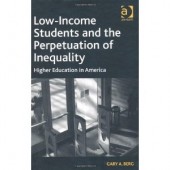To raise test scores, plant a garden
Ignoring tests could be a great way to improve test scores, or so suggested a story in the Wall Street Journal over the weekend. In response to pressure to raise achievement, administrators at a struggling New Jersey school planted a garden. They also added a peer-mediation program and invited “scholars to teach art, dance and music.” Over a decade, test scores rose dramatically.

Children from a D.C. elementary school help with the White House garden (photo courtesy of Joyce N. Boghosian)
Howard Gardner, the Harvard professor who developed the idea of multiple intelligences, was the inspiration for the unconventional approach taken at the school, Seth Boyden Elementary. He has been critical of the increasing reliance on standardized testing in public education; at a recent talk sponsored by the Spencer Foundation, Gardner said he worried “a great deal about the implicit or explicit messages in having such a focus on tests, data, failing kids, failing schools, rankings, rankings, and rankings.”
Yet the story of the New Jersey school reminds us that it may not be that tests are necessarily bad — some are, some aren’t — but how they’re used and how they affect the learning environment in schools. Opposite Gardner at the Spencer talk was Richard Murnane, also a Harvard professor who co-edited the book Data Wise: A Step-by-Step Guide to Using Assessment Results to Improve Teaching And Learning. Murnane argued that reliance on tests and other data to measure performance need not necessarily come at the expense of children’s growth in other areas, such as critical thinking and social-emotional development, but that tests and data are key to increasing equity in the public school system.
It seems like the experience in New Jersey could support either side of this argument: Eschewing test prep at Seth Boyden appears ultimately to have helped student performance on tests. That’s not the whole story, however.
After embracing its broader approach to education, the school became more racially diverse. At the same time, New Jersey Department of Education data show that the percentage of poor children at the school dropped.
Research has shown that a higher percentage of higher-income students at a school has a positive effective on achievement, which means there could be a more complex explanation of what happened at Seth Boyden: the adoption of a more progressive approach to teaching and discipline might have led students to do better on tests even as more affluent children — who tend to have a positive influence on the achievement of their less advantaged peers — were drawn to the school.
This not a happy ending yet. Students at the school still lag behind others in the state on test scores. But the school is worthy of a closer look by educators and policymakers as they decide what the next round of school reforms should look like.
Recess round-up: July 13, 2010
A daily dose of education news around the nation – just in time for a little mid-day break!
Study abroad: A large research initiative looking at Georgia’s university system has found that studying abroad improves students’ grades and graduation rates. (Inside Higher Ed)
Stimulus money: Districts in Denver have been slow to spend their stimulus money. In total, the state has only spent just over a quarter of the funds available to it, reflecting a national trend. (Denver Post)
Standardized test: An audit is under way in Florida after five superintendents questioned “significant anomalies” in results on the state’s standardized test. All five districts did notably worse, some losing as many as 90 points in learning-gain components. (The Holmes County Times Advertiser)
Special education: Vermont has been placed in the “needs assistance” category for the implementation of the Individuals with Disabilities Education Act (IDEA) for two years running following an annual review. If the state doesn’t improve, it could face restrictions on federal grant money next year. (Burlington Free Press)
Head Start: Opposing views in USA TODAY consider whether Head Start should receive further funding.
School funding: The Ohio Department of Education recommends a $929 million increase in the next two-year state budget. But the price tag is really closer to $1.7 billion once stimulus money that will need to be replaced is accounted for. (The Columbus Dispatch)
Dropouts: Despite having district dropout rates below Mississippi’s average, two superintendents continue to push for improvement. (Hattiesburg American)
New lawsuit in California might signal shift in strategy, surge of similar cases
 A lawsuit filed today alleges that California’s school funding system is unconstitutional, and it might hint at things to come around the country. A surge of similar cases and subtle changes in the legal arguments of such cases are possible, experts say.
A lawsuit filed today alleges that California’s school funding system is unconstitutional, and it might hint at things to come around the country. A surge of similar cases and subtle changes in the legal arguments of such cases are possible, experts say.
Public Advocates, the San Francisco-based public interest law firm and advocacy group that filed the suit on behalf of parents, students and several grassroots organizations, claims that California’s current funding system “fails to provide children with an opportunity to obtain a meaningful education.”
Many of California’s public schools are doing poorly by any measure. On national standardized tests, the state often ranks among the worst in the country – joined by Mississippi and Alabama. Even affluent, white students in California perform worse than their peers in other states.
These statistics would be troublesome at any time, but the state is currently facing a $19 billion deficit and is scrambling to fund many public services. And headlines about teacher layoffs and reduced services have dominated the education news coming out of the state for months now.
The lawsuit ultimately hopes to force the legislature to throw out its funding system and completely revamp it to improve the quality of education in the state. A similar suit, Robles-Wong v. California, was filed on behalf of state school boards and teachers’ unions earlier this year.
Eric Hanushek of Stanford University predicts that the Public Advocate suit is part of a “new flood of adequacy suits partly pushed by the current recession and fiscal problems.” Although, as he noted, California has been ripe for such an action for years, school funding has taken big hits in many states as a direct result of the recession. Other lawsuits are also in the works in Florida, Illinois and Colorado.
Even though an uptick in these types of lawsuits may be under way, there has been a steady string of them over the past two decades. In the 1970s, Serrano vs. Priest set the stage for a number of educational equity cases to follow. In the decision, the California Supreme Court ruled that the state’s method of funding schools was unconstitutional because poorer communities had to pay taxes at higher rates to secure the same, if not lesser, educational opportunities for their students.
In 1989, in Rose v. Council for Better Education, the Kentucky Supreme Court ordered the state legislature to overhaul its schools and increase spending. This opened the door to so-called “adequacy” lawsuits, paired still with an equity claim, that argued for the right of each child to have access to an adequate education.
While these types of lawsuits show no signs of disappearing, the tone may change slightly. Today, people “can’t just say give us more money,” Hanushek said. “They have to make the case that in fact it’s going to be used well.”
Michael Rebell, Executive Director of the Campaign for Educational Equity at Teachers College, Columbia University, advocates for new strategic approaches to these adequacy cases in light of the recession. Instead of fixating on a set amount of money, he hopes to make legislatures and governors pay more attention to reductions.
They should “look closely at what they’re cutting and how they’re cutting it,” Rebell said. “Very few legislators and governors attempt to look at the issue that way.”
In keeping with this theme, the Public Advocates lawsuit does not specify a dollar amount that must be awarded to the schools, but rather pushes for an overhaul of the way the money is spent. The group also calls for the development of adequate data systems that can measure programs and monitor the impact of money being spent.
In the complaint, the plaintiffs charge that California’s school finance system is “complex, irrational and wholly divorced from the actual costs of providing a meaningful education to all students.” Looking specifically at the rationality of the funding, as Robles-Wong v. California also does, may even introduce another type of case, according to Rob Reich of Stanford University.
“It represents something new on the horizon,” he said. “The question is, is the funding scheme even rational … It’s an even less demanding standard than an equality standard.”
But regardless of the direction this suit ultimately goes, it likely has a long road ahead. And it won’t be without opposition. John Eastman, former dean of the Chapman University School of Law and current candidate for California Attorney General, plans on looking for taxpayers to represent and intervening in the lawsuit.
“This thing should be viewed as frivolous,” he said. There is “no constitutional mandate that is undermined by the current funding schemes.”
Recess round-up: July 12, 2010
A daily dose of education news around the nation – just in time for a little mid-day break!
Introduction to college: A new program in Alaska targets high school juniors who would be the first in their families to go to college and introduces them to campus life. (Anchorage Daily News)
Across the country, colleges are emphasizing college orientations – and getting mom and dad more involved. (Chicago Tribune)
Teacher placement: The Denver Public Schools tried out a new teacher placement system this year, which was designed to avoid “forced placements” of teachers in the district’s lowest-performing schools. (Denver Post)
Online degrees: The University of California hopes soon to offer an online bachelor’s degree, proposing a “highly selective, fully online, credit-bearing program.” (San Francisco Chronicle)
Merit pay: Bonus checks for teachers whose students performed well on standardized tests this year have begun to make their way out in Florida – but not everyone is happy about the checks. (Orlando Sentinel)
‘Recapturing’ dropouts: A superintendent in Baton Rouge, Louisiana is considering hiring groups to “recapture” dropouts and enroll them in new, alternative schools. (The Advocate)
High school standards: South Dakota students will now have to pass geometry, algebra II, physics and chemistry to graduate from high school. But some worry that these classes will simply become dumbed down. (Argus Leader)
Stimulus money: Thirty-nine states put stimulus money toward higher education this year. So what happens when those funds dry up? (Cincinnati.com)
College completion: West Virginia Gov. Joe Manchin III announced over the weekend that higher education productivity would be the focus of his term as chair of the National Governors Association. (Inside Higher Ed)
How not to be a role model

LeBron James (photo by Keith Allison)
That young people look up to Hollywood stars and professional athletes as role models is a fact of life. Often, these superstars disappoint us by revealing that they, too, are only human. This is an especially difficult reality for children to accept. We want — and we need — heroes. Superheroes, even. For a brief bit after 9/11, we fixated on firefighters and police officers as superheroes. Rightly. But it didn’t last.
Every now and then we also come to see teachers as superheroes. Randy Pausch, a computer science professor at Carnegie Mellon University, became a superhero to many after writing The Last Lecture and documenting his ferocious fight against pancreatic cancer. When he died on July 25, 2008, the world wept.
And then there is Dr. David Benke, the middle-school math teacher who in February tackled a gunman in Littleton, Colo. after the gunman opened fire on students at his school. Assisted by colleagues, Benke was able to restrain the assailant until police arrived. No one died.
But it is not teachers who routinely top the superhero lists.
Among the many athletes who do, one could fill an entire book with huge and heartbreaking letdowns: Tiger Woods, Marion Jones, Flyod Landis, Michael Vick, Ben Roethlisberger, Barry Bonds, Roger Clemens, A-Rod, Manny Ramirez, Mark McGwire … you get the picture. Not exactly people we want our children to emulate, even if we envy their financial success and fame.
Some people wanted to add LeBron James to this list last night, after he announced on live TV and with much fanfare that he was leaving behind the Cleveland Cavaliers for the Miami Heat. Young and old in Cleveland felt betrayed. Some hometown fans began burning their LeBron jerseys. A riot wouldn’t have been entirely unexpected.
But what shocked me most was the letter Cavs owner Dan Gilbert wrote and then posted on the team’s website. If ever there were a pitch-perfect example of how not to be a role model — how not to respond to disappointment or a break that didn’t go your way — this is it.
Gilbert has just taught kids everywhere what it means to be a sore loser.
Not only was Gilbert’s rhetoric way off — accusing LeBron of “cowardly betrayal,” as if LeBron had no right to play for another team — but his letter was also riddled with poor English and poorer punctuation.
Gilbert also went way overboard on his use of bold and caps. But the kicker that gave away his rambling letter as that of a snotty, sniffling five-year-old who’s just been told he lost was Gilbert’s choice of font: Comic Sans. Who over the age of 10 writes in Comic Sans?!?
More importantly, what lessons will children learn from adults like Gilbert who behave so childishly?
Postscript: for a look at where the proceeds of last night’s TV show are headed, see this piece in the Christian Science Monitor. The show was sponsored in part by the University of Phoenix but “all proceeds from ads sold for the broadcast – expected to be between $2 million and $2.5 million – will be donated to the Boys and Girls Clubs of America,” according to the Monitor. Thanks to Sarah Garland for drawing my attention to this article.
Recess round-up: July 9, 2010
A daily dose of education news around the nation – just in time for a little mid-day break!
Technology and education: With all the talk of the internet as equalizer, David Brooks writes that literary culture, as in life with a library, still produces better students. Meanwhile, if you haven’t seen last month’s white paper “Assessing Technology Literacy: The Case for an Authentic, Project-Based Learning Approach” out of Virginia Commonwealth University, take a peek. (The New York Times, Generation YES blog)
Job readiness: Back to school, no more on-the-job training for high school students in Barstow, Calif. (Desert Dispatch)
Higher education costs: Spending on recreation and administration outpaced spending on instruction. The Delta Project report, “Trends in College Spending: 1998-2008,” offers nifty “plug-and-play” features for anyone who’s interested in “following the money.” (The New York Times, The Huffington Post, Inside Higher Ed)
School improvements: In San Diego, the school board allowed the King-Chavez Arts Academy charter school to stay open after it landed on a state list of persistently failing schools, but only if the school meets a long list of conditions. (Voice of San Diego)
For details on the status of California schools, have a look at the School Improvement Grant applications. King-Chavez Arts Academy is categorized here as a “Transformation” school, which means it would have to “replace the principal and take steps to increase teacher and school leader effectiveness,” in addition to enacting other reforms. State board deliberations begin on August 2nd.
And if you are still interested, for background, take a look at this report, by the Center on Education Policy, on efforts to improve persistently low-performing schools.
Education reform: It’s complicated living in a post No Child Left Behind (NCLB) world. (Quick and Ed)
Edujobs vs. ed reform: John D. Podesta, who co-chaired President Obama’s transition team and served as White House Chief of Staff to President Clinton, accounts for the debate within his own organization, the Center for American Progress (CAP). CAP Senior Fellow Scott Lilly had called proposed cuts to Race to the Top — to salvage a $10 billion bill to avoid additional teacher layoffs — a “tradeoff worth making.” His colleagues disagreed, saying any such cuts would be “a very unfortunate setback.”
Common standards: New Hampshire and Georgia are the latest states to adopt the common core standards. The state-led effort was coordinated by the National Governors Association and the Council of Chief State School Officers. (Education Week and The Atlanta Journal-Constitution)
Recess round-up: July 8, 2010
A daily dose of education news around the nation – just in time for a little mid-day break!
Teacher training: The Answer Sheet‘s Valerie Strauss interprets an independent report on Teach For America. Among other things, University of Texas, Austin professor Julian Vasquez Heilig recommends pressing recruits to commit for five years instead of just two. (Washington Post)
Teacher training, part ii: Brendan Lowe, a Teach for America corps member who just completed his second year, wants to stay in the classroom. (GOOD)
Student loans: National Public Radio goes modern by shortening its name to NPR, and it has an interesting story about a group trying to help veterans pay off their student loans and get on with their lives. (Washington Post and NPR)
Start time: A new study in July’s Archives of Pediatrics & Adolescent Medicine suggests a later start time for high schoolers can work wonders. (Boston Globe)
School funding: Money to help high school dropouts return to school won’t be cut this year in Chicago. (AP via Chicago Tribune)
School funding, part ii: A grand jury in Northern California recommends merging school districts to save millions of dollars. (Mercury News)
Technology and education: The parents of internet-savvy kids in California’s Central Valley get schooled in social networking and email. (Merced Sun-Star)
Week 2: Saving jobs vs. saving education reform
Have a look at Eliza Krigman’s National Journal tally of expert opinion on the controversy surrounding Rep. Obey’s war bill amendment. You know, the one that proposes cutting $500 million from Race to the Top, $100 million from the federal charter schools program and $200 million from the Teacher Incentive Fund. The debate is heated, despite the fact the bill is unlikely to pass the Senate — and, should it reach his desk, President Obama has vowed to veto it.
Meanwhile, Education Week‘s Michele McNeil writes that “depending on which state you live in, the edujobs bill may not be such a good deal — especially if your state might win a Race to the Top grant.” Might is the operative word here. She cites a handful of state-by-state considerations, including “Louisiana, which placed 11th in Round 1. The state could win up to $175 million in Race to the Top versus $147 million under edujobs.” So take your pick: ed reform or 2,222 teaching jobs saved and/or created, according to Michael Griffith’s calculations at the Education Commission of the States.
Or is this not an either/or proposition? Must we sacrifice reform to save jobs? Must we sacrifice jobs to save reform?
Race to the Top is money that comes with strings attached. But would any such strings be attached to the proposed $10 billion “edujobs” bill? Or will states essentially be free to spend the money as they see fit?
Should the legislation pass? If so, what accountability measures should be included?
Do for-profit schools do a better job with low-income students?
For-profit colleges have had their share of negative attention lately, with a Democratic Senate committee calling for tougher oversight and regulation, and reports focusing on the excessive debt their students incur.
That’s one reason why it was refreshing to read the comments of Gary Berg, the author of Low-Income Students and the Perpetuation of Inequality, in a Q&A posted on InsideHigherEd. Berg made the point that all of higher education can learn from the way for-profit schools serve students from low-income families. Berg is a dean of extended education at California State University Channel Islands, and his book explores how higher education should and could do a better job of helping economically disadvantaged students.
He was asked if he sees the burgeoning popularity of for-profit schools as “generally a good thing for low-income students,” and replied as follows:
“The public universities with their access missions have a special responsibility to serve students from low-income families, and can gain from observing the for-profits. Many of the for-profits pay special attention to providing clear pathways for first-generation college students both in terms of psychological self-esteem issues and the practical aspects of attending college while working and raising families … over all, for-profit institutions are painfully aware of the fact that traditional universities have an enormous competitive advantage in academic reputation and understand that they have to work hard to recruit and keep students. I think in the long run those from the for-profit sector that are good competitors, both ethical and effective, will benefit all.”
The rest of the Q&A is accessible here.
Recess round-up: July 7, 2010
A daily dose of education news around the nation – just in time for a little mid-day break!
School turnaround: LA Unified’s Fremont high school reopens with a mostly new staff as the district attempts to address the campus’ historically dismal academic results. (Los Angeles Times)
Achievement gap: Five school systems across the country have raised achievement using five common-sense steps. (Los Angeles Times)
No Teacher Left Behind: When did it become so difficult to fire a teacher? “The Explainer” provides historical perspective on teacher tenure. (Slate)
School reform: Q&A with Oscar-winning documentary filmmaker Davis Guggenheim about his new film Waiting for Superman, which takes a brave crack at explaining ed reform — but misses a beat. (SF Gate and Huffington Post)
Math scores up; science scores fall: In Arkansas, 76 percent of 7th-9th-graders who took the statewide Algebra I test in April 2010 scored “proficient” or better, up 6 percent from last year. But on the biology test, only 36 percent of students scored “proficient” or better, down from 41 percent last year. (Arkansas News)
Special ed: Is an annual review necessary? The U.S. Department of Education has evaluated states since 2006 based on their ability to meet certain “measurable and rigorous targets” related to special-ed students. (Education Week)
Sex ed: A fundamental shift has begun, as the federal government moves away from the previous “abstinence-only” focus on which it spent over $1.5 billion since 1996. Cleveland school district officials hope to secure $1 million each year for the next five years to extend the district’s sex education program that was introduced in 2006. (The Plain Dealer)
Language learning: Disney is aiming to expand its schools program in an effort to teach english to 150,000 children a year by 2015. (Planet Money via Financial Times)



